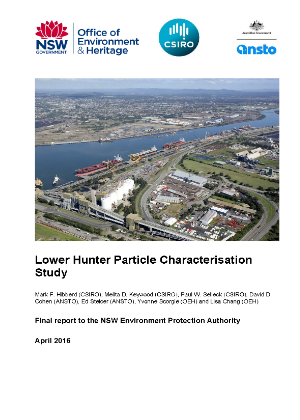When: Study based on sampling conducted between 1 March 2014 and 28 February 2015
Where: Lower Hunter
Aims: to investigate the composition and major sources of particle pollution in the Lower Hunter
Findings: Nine source factors were identified as contributing to PM particles, namely, fresh sea salt, pollutant-aged sea salt, secondary ammonium sulfate, soil, wood smoke, vehicles, mixed shipping and industry, mixed industry and vehicles and nitrate. Six source factors were identified as contributing to PM2.5 – 10 particles, namely fresh sea salt, light-absorbing carbon, soil, industry and bioaerosols.
Health impacts of fine particles: Fine particles can pass through the throat and nose and into the lungs, causing respiratory and cardiovascular problems.
The Lower Hunter Particle Characterisation Study was commissioned by the NSW Environment Protection Authority in 2013 to investigate the composition and major sources of particle pollution in the Lower Hunter. The study was conducted by scientists from the former Office of Environment and Heritage (OEH), CSIRO and the Australian Nuclear Science and Technology Organisation (ANSTO), with oversight from the NSW Ministry of Health, and completed in 2016.
Focusing on very small particles, invisible to the human eye, which can be inhaled and can pass through the throat and nose and into the lungs, the study aimed to determine the composition and major sources of fine particles (PM2.5) and coarse particles (PM2.5-10).
Fine particles were monitored at four sites, including two sites representative of regional population exposures (Newcastle, Beresfield) and two sites near the Port of Newcastle (Mayfield and Stockton). Coarse particles were monitored at Mayfield and Stockton, the two sites near the Port of Newcastle.


